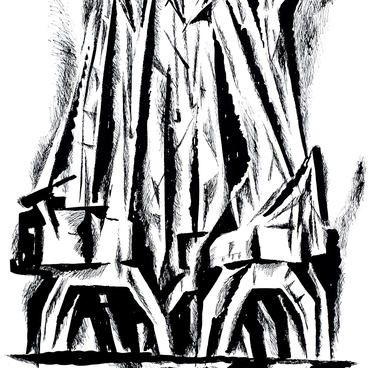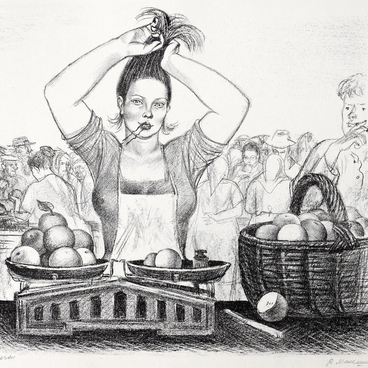The exhibition of the Irbit State Museum of Fine Arts includes a linocut “A New Boat” by Boris Stepanovich Lukoshkov.
Three stages can be identified in the art of Boris Lukoshkov: early painting (historical and revolutionary scenes), graphics (lyrical images, “the poetry of northern villages”), and late painting (in which the artist strove for generalization of form). All three are invariably connected with the Russian North. Boris Lukoshkov began his career as a graphic artist. The development of linocut in Arkhangelsk was associated with his name. His linocuts of the 1960s were mainly inspired by areas around Shenkursk. The artist’s impressions from his journeys to these lands formed the basis of a series of graphic sheets. In that series, he explored unique areas near the White Sea and ancient monuments of the North such as the Solovetsky Islands, the Siya Monastery, and ancient churches and cathedrals in Kargopol and Shenkursk.
The sun can be found in every work by Boris Lukoshkov. Its images are particularly unique and distinctive in linocuts. His prints are recognized for their lightness, soulfulness, and “silvery colors”, rather than the clear contrast of black and white. In painting, Boris Lukoshkov mainly focused on landscapes, once again, those of the Russian North. He depicted villages, fields, views of his favorite Vaga River, and the surroundings of Shenkursk in a traditional, realistic manner, marked by contemplation, tenderness, and love for his quiet homeland. However, the artist chose linocut as his preferred technique, and it was in that style that he created many works dedicated to fishing settlements, villages, and the monasteries of the Russian North. His linocuts continue to amaze with their strict elegance, minimalism, and epic imagery — “Northern Silence” (1969), “Siya” (1967), “Zolotitsa” (1970), and “A New Boat” (1977).


